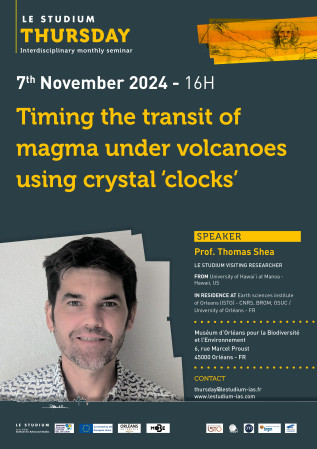Timing the transit of magma under volcanoes using crystal ‘clocks’
Muséum d’Orléans pour la Biodiversité et l’Environnement
6, rue Marcel Proust
45000 Orléans
France
Presentation
Subsurface geologic formations are critical in facilitating the energy transition to net zero. Such formations serve as storage reservoirs for anthropogenically produced CO2, radioactive waste from nuclear energy facilities, and renewable energy, in the form of H2 storage or geothermal energy generation. In such systems, mineral reactions can occur over a wide range of spatial (nm to km) and temporal (s to 100s of years) scales, impacting formation properties and the efficiency, risk, and environmental impact of such systems. Accurate understanding and prediction of mineral reactions in these systems is highly challenging due to the heterogenous nature of these systems but essential for site selection, risk assessment, and engineering design. Here, a unique, multi-scale imaging, laboratory experimental, and simulation approach is used to enhance understanding of the mineral reactions in these heterogenous conditions. Observations of mineral reactions and changes in formation properties at the micro- to macro-scale are made and leveraged to improve simulation and predictive capabilities of reactions in porous media. This helps to better understand and predict implications of geochemical reactions in geothermal, geologic CO2 sequestration, and subsurface H2 storage systems.
Speaker
LE STUDIUM Visiting Researcher
FROM: University of Hawai'i at Manoa, Hawaii - US
IN RESIDENCE AT: Earth sciences institute of Orleans (ISTO) - CNRS, BRGM, OSUC / University of Orléans - FR










